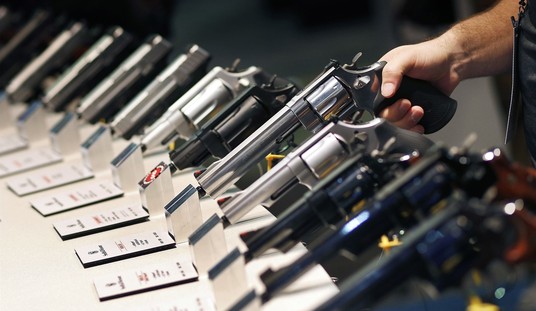California’s microstamping law was first put on the books in 2012, and since then virtually no new models of handguns have been available for sale in the state. The law required that all new semi-automatic handguns imprint a unique code in two places on every ammunition cartridge that’s fired, and despite objections from gun makers, who argue that the mandate was impossible for them to meet, the Ninth Circuit upheld the state law and the Supreme Court turned away a challenge earlier this year.
Just a few weeks ago, however, Gov. Gavin Newsom signed a major overhaul to the microstamping law, supposedly with the intent of making it easier for manufacturers to comply. Starting in 2022, handguns will “only” have to stamp a unique code in one location on the spent cartridge, which could be accomplished by placing the microstamp on the firing pin of the pistol.
The National Shooting Sports Foundation’s Larry Keane argues in a new op-ed that the revised law is still bad news for legal gun owners, and won’t do anything at all to prevent or help solve crimes.
… firing pin microstamping technology has been found to be unreliable and inconsistent by technical experts in several peer reviewed studies. A study by the National Academy of Sciences concluded that “the durability and survivability of markings on the bullet are still major concerns. Bullets would also be likely to suffer the corrosive effects of blood and other substances.”
A study by researchers at the University of California, Davis, also concluded that “more testing in a wider range of firearms is needed” before the technology could be a proven resource for law enforcement.
Lastly, an Iowa State University study stated that “legitimate questions exist related to the technical aspects, production costs and database management associated with microstamping that should be addressed before wide scale implementation is legislatively mandated.” To this day, such questions have not been adequately answered.
Firing pins can always be swapped out, and a simple file and a few minutes work can obliterate or deface the microstamp itself. Many criminals also use guns that are acquired through theft or the black market, which further reduces the usefulness of the microstamping mandate.
As Keane points out, the biggest impact that microstamping 2.0 is likely to have is on the number of handguns available for sale in California.
Despite the lack of a way to reliably incorporate microstamping technology into firearms, AB 2847 will further automate gun control because it requires that for any new model added to the roster, three models of handguns that state has certified as safe for consumers to purchase must be removed from the state’s handgun roster. Which three models will be removed, and who decides that?
By imposing mandates on firearm manufacturers, the law is simply a pathway to a gradual ban on handguns in California. The evidence shows that this is not just hyperbole. After the initial microstamping law took effect in 2013, pistols began to drop off the list as manufacturers were not able to get new models or models with improvements onto the roster.
On May 17, 2013, there were 953 pistols on the roster. By January 2014, when the National Shooting Sports Foundation and the Sporting Arms and Ammunition Manufacturers’ Institute filed a lawsuit against the state’s Department of Justice challenging the microstamping law, the number had already dropped to 867.
As of Oct. 6, 2020, there were only 496 semiautomatic pistols listed on the roster, representing a decrease of almost half of the handguns Californians can purchase since the initial law took effect. There have been no new models added to the roster since 2013, thanks to this mandate and the state’s interpretation that even minor cosmetic changes constitute a new model requiring microstamping.
Keane says the industry will continue to fight the new law. One small silver lining to the latest gun control measure is that the revisions to the state’s microstamping mandate allows for a brand new lawsuit to be filed. Thanks to the Trump administration’s work on filling judicial vacancies, any new legal challenge is likely to face better odds than the first round of litigation, and when the issue eventually comes back before the Supreme Court, there’s a good chance that SCOTUS would agree to hear the case now that Justice Amy Coney Barrett is on the bench (at least if Joe Biden and Kamala Harris don’t have the chance to pack the Court with anti-gun justices).









Join the conversation as a VIP Member